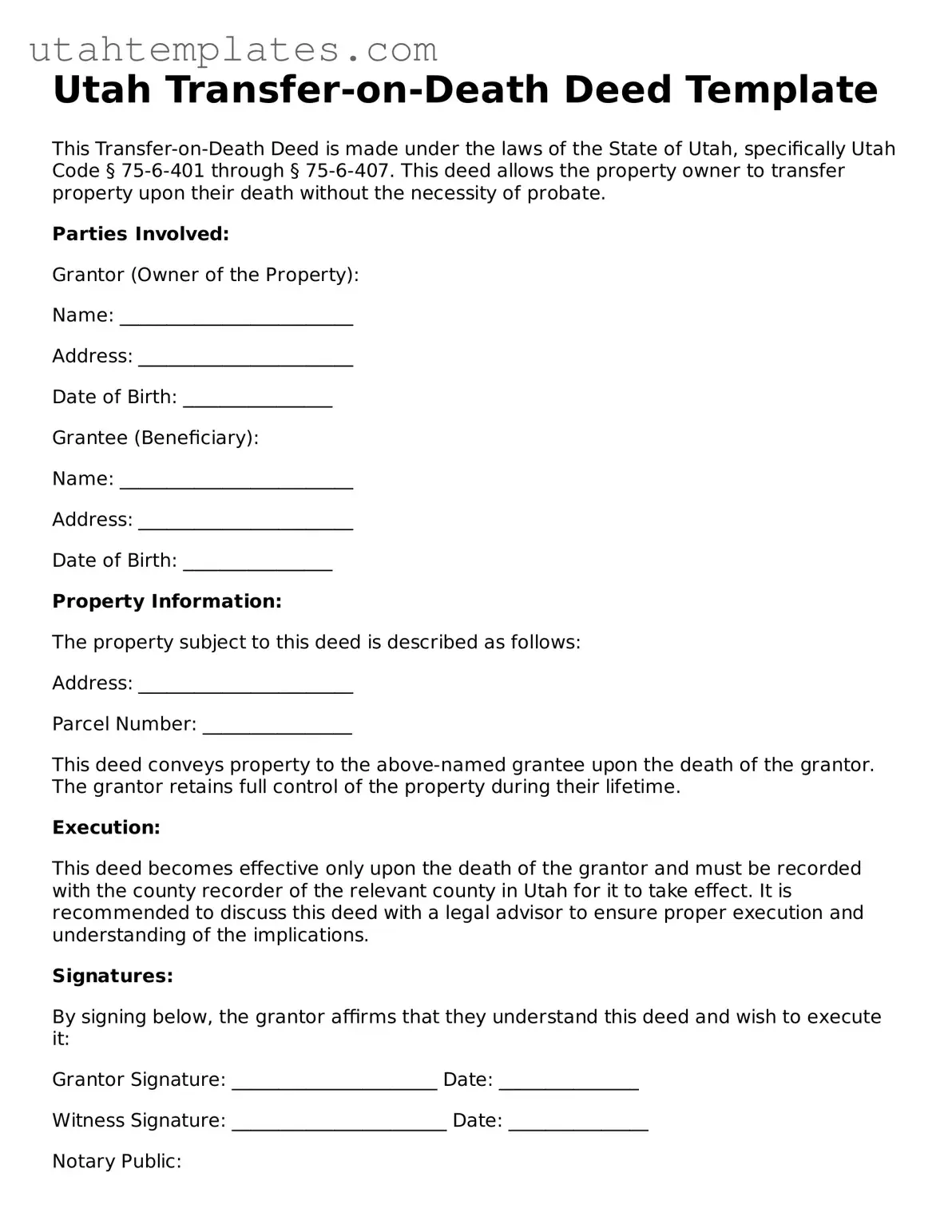Utah Transfer-on-Death Deed Template
This Transfer-on-Death Deed is made under the laws of the State of Utah, specifically Utah Code § 75-6-401 through § 75-6-407. This deed allows the property owner to transfer property upon their death without the necessity of probate.
Parties Involved:
Grantor (Owner of the Property):
Name: _________________________
Address: _______________________
Date of Birth: ________________
Grantee (Beneficiary):
Name: _________________________
Address: _______________________
Date of Birth: ________________
Property Information:
The property subject to this deed is described as follows:
Address: _______________________
Parcel Number: ________________
This deed conveys property to the above-named grantee upon the death of the grantor. The grantor retains full control of the property during their lifetime.
Execution:
This deed becomes effective only upon the death of the grantor and must be recorded with the county recorder of the relevant county in Utah for it to take effect. It is recommended to discuss this deed with a legal advisor to ensure proper execution and understanding of the implications.
Signatures:
By signing below, the grantor affirms that they understand this deed and wish to execute it:
Grantor Signature: ______________________ Date: _______________
Witness Signature: _______________________ Date: _______________
Notary Public:
State of Utah
County of _______________________
Subscribed and sworn to before me this ______ day of ______________, 20__.
Notary Signature: _______________________
Notary Public for the State of Utah
My Commission Expires: ________________
